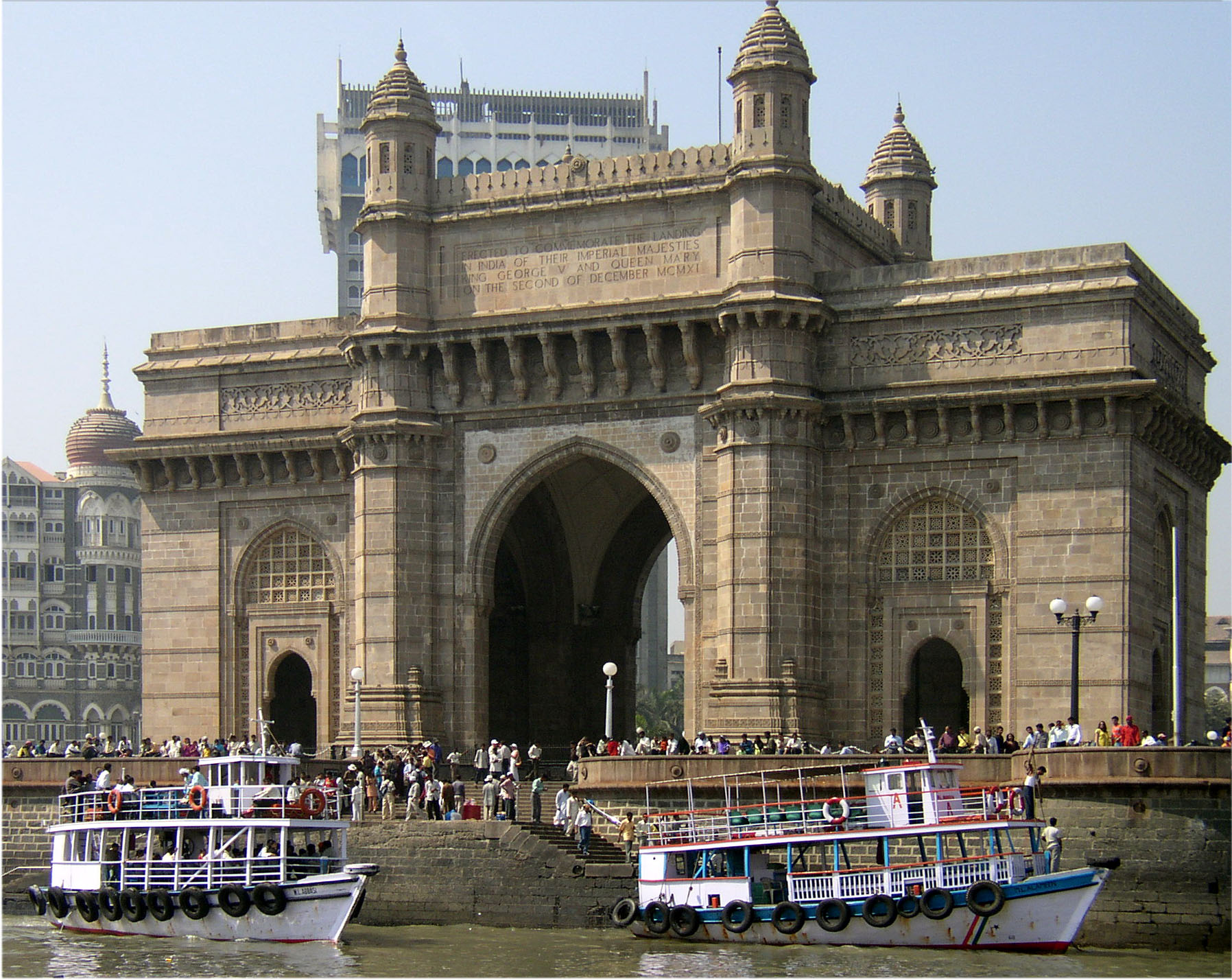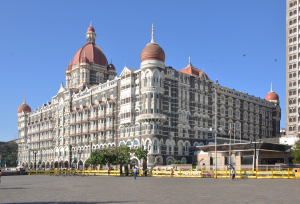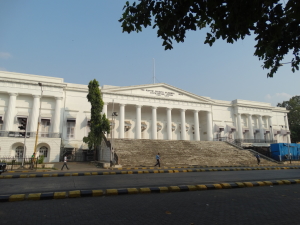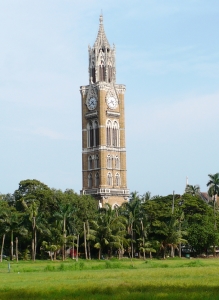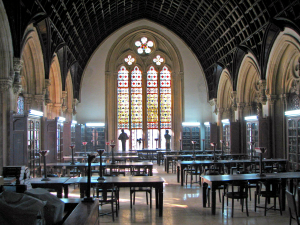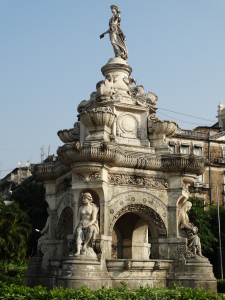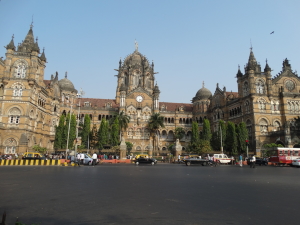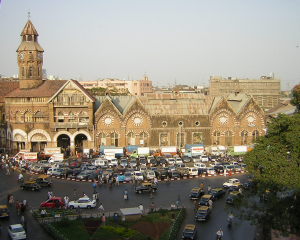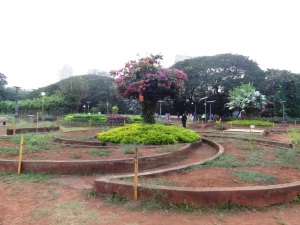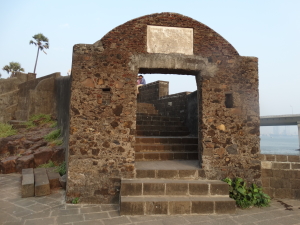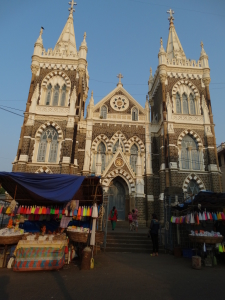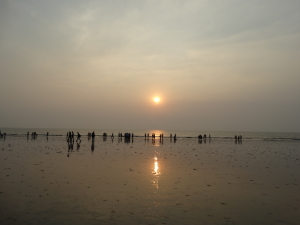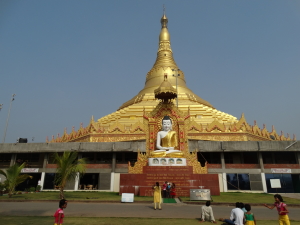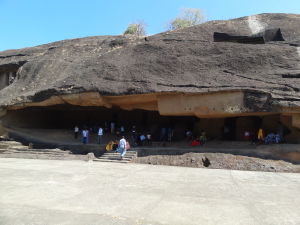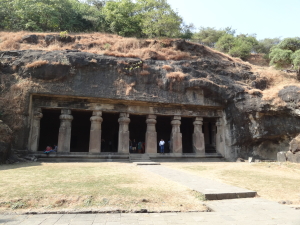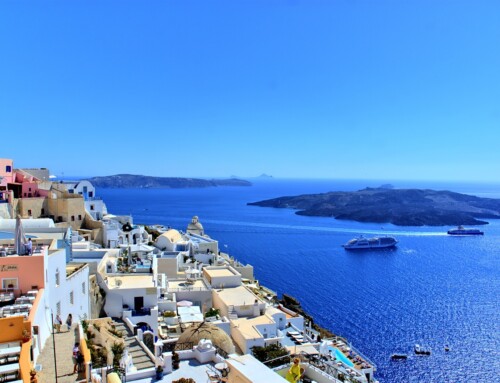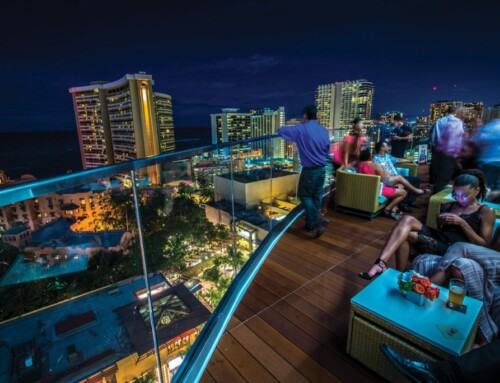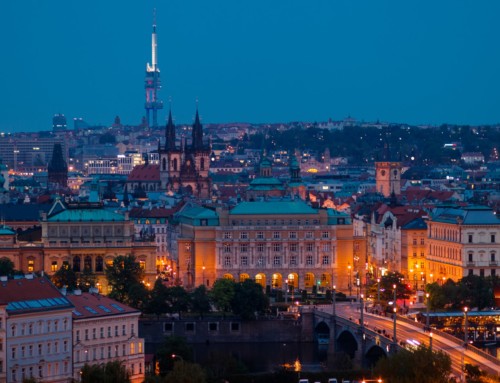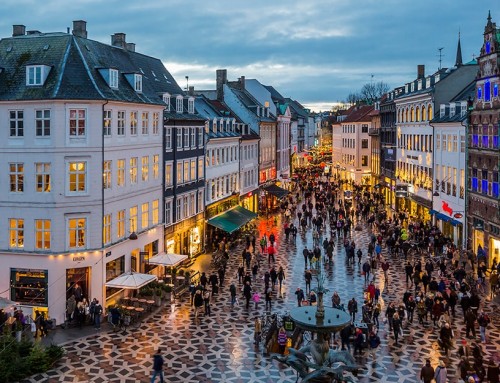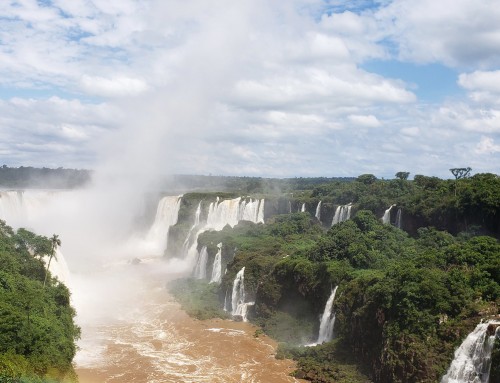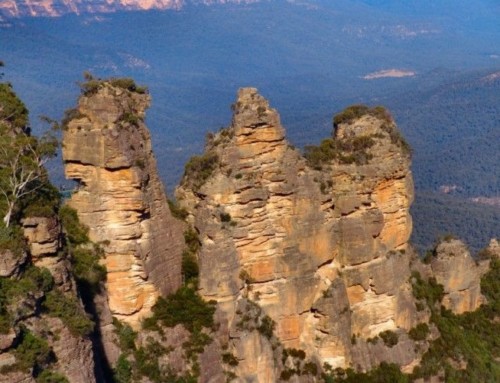Welcome to Mumbai, the pulsating, energetic, vibrating city that never sleeps. It moves at a fast lane pace in every sphere.
Mumbai was once a cluster of seven islands. During the colonial era, it was presented as part of the dowry to King Charles II in 1661, when he married the beautiful Princess Catherine de Braganza of Portugal.
Independent India saw Mumbai (Bombay) as the capital state of Maharashtra. It has an ever changing face with time but at the core of its heart Mumbai is surrounded by Indian customs and values. It is the fourth most populous city in the world.
Mumbai city is located on the Salsette Island which consists of an archipelago of seven islands.
Gateway of India
The Gateway of India was built during the British Era to welcome the visit of King George IV and Queen Mary. The Gateway is thus a symbolic monument for Mumbai India. It has a strategic location on the waterfront of the Arabian Sea in South Mumbai. The Gateway is built in Indo- Saracenic style. The foundation was laid on 31st March 1911. It was designed by George Wittet, and the construction was completed in 1924. The structure has a huge arch. It is built of basalt rock about 86 feet high. The then fishing community used it as a fishing jetty. During the British Raj, it was used by many as an entry point to Bombay (Mumbai) by boat. I stood admiring the structure and clicking photographs of it from all angles.
The Taj Mahal Palace Hotel
The main Taj Mahal Hotel is structured in Indo- Saracenic style by Jamshedji Tata, where not only the whites, but all other visitors could come and stay in style and comfort. It overlooks the Arabian Sea. The doors of this master crafted hotel open to all its guests on 16th December 1903. The hotel is ranked in the prestigious Conde Nasta Travellers Reader’s Travel Awards of 2010. The hotel has on the ground floor shops, an art gallery, book store and a restaurant besides the other facilities for a luxurious stay for its guests.
Asiatic Society of Mumbai
This is a society in the field of Asian studies based in Mumbai India. The library of the society includes some rare and valuable books. Here, I found priceless artifacts, ancient manuscripts and a collection of coins. The Town Hall houses the Asiatic Society and the Asiatic Library. It is now a heritage structure.
The structure of the building is a mix of Greek and Roman architecture. The eight Doric columns at the portico seem to welcome it visitors. As I climbed up the flight of thirty steps to reach the town hall, I was left admiring this massive library. It is in South Mumbai within close range of the Horniman Circle and the Reserve Bank of India.
Rajabai Clock Tower
The tower is located in the Fort Campus of the University of Mumbai. The height of this tower is 280ft. It was designed by Sir George Gilbert Scott, and its construction was completed in November 1878. It was modelled on the Clock Tower of the UK Houses of Parliament in London, the Big Ben.
The tower’s architectural design is a fusion of Gothic and Venetian styles. It is built of buff colored Kurla stone, which was available locally. It has a spiral staircase and a viewing gallery at the first level. The form of the structure changes from a square to an octagon. It chimes one tune every fifteen minutes. During British Raj, the tunes played were “Rule Britannia”, “God Save the King”, “Home Sweet Home” and “A Handel Symphony”.
A wealthy businessman, Premchand Roychand, monetarily contributed to the construction of the tower and thus it stands named in the memory of his mother Rajabai. The tower has eight statues, each representing the Indian castes.
University of Mumbai
This university is one of the first of three public state universities in India. It was founded in 1857. It offers a number of Bachelors, Masters and Doctoral degrees. Students can also get diplomas and certificates in many disciplines from this prestigious university. Its other campus is located at Kalina, Santacruz Mumbai. The Kalina Campus is a graduate training and a research center. The Fort Campus now houses the administrative division of the university. It is built in gothic style. I did my Masters in Geology and so also Masters in Communication and Journalism from this university.
Flora Fountain
This is an architectural heritage monument. It is located at the southern end of the Mile Long Road (now Dadabhai Navroji Road) at Fort. The structure of the Roman Goddess Flora built in 1864 is a blend of water architecture and sculpture. Five streets meet here at the now called Hutatma Chowk, which has a structure of torch bearing patriots.
The Flora Fountain as well, as the Hutatma Chowk, attract a number of visitors and look beautiful especially at night. This piece of beauty and sacrifice evokes a curious magic in the hearts of the onlooker.
Victoria Terminus
This massive structure was designed by Frederic Williams Stevens and is a blend of Italian Gothic and Mughal styles. In the year 1887, the station was built in Bori Bunder area to commemorate the Golden Jubilee of Queen Victoria.
It was named after the queen but has now been renamed as Chhatrapati Shivaji Terminus after a famed Indian warrior of the seventeenth century. The design bears a similarity to the St. Pancras railway station in London.
The construction of this masterpiece station building took ten long years. It has a high dome with an octagonal ribbed structure. It has a colossal female structure, which symbolizes Progress. She holds a torch in her right hand and in her left hand, a spoked wheel. The main structure is built of Indian sandstone and limestone with high quality Italian marble used for the decorative elements. Indian blue stone has been used for polishing the marble. All the arches have carved foliage and grotesque.
The terminus runs long distance trains connecting Mumbai to North, South, East and West of India. Also, it has got a local suburban network. It is a lifeline for the people of Mumbai who commute daily via its Central, Harbor and Western lines. I could not take my gaze away from this marvelous structure admiring it from the bottom to the top.
Crawford Market
This is the most famous market of South Mumbai. It is now known as Mahatma Jotiba Phule Mandai. Its location is strategic, with the Mumbai Police headquarters just opposite, the Victoria Terminus to its north, and the J.J. Flyover to the west.
The market has shops of fruits, flowers, poultry and pets for sale. On the other side, I found shops full to the brink selling imported items such as cosmetics, household items, chocolates, etc. I strolled along the entire market and also bought some mouthwatering chocolates for family, friends and myself. I stepped out and admired the structure, which is a mix of Norman and Flemish architectural styles. Outside the entrance, I found figures depicting Indian farmers. The market spans over an area of 22,471 sq.m. The Crawford Market was built using buff colored coarse Kurla stone along with the red stone from Bassein. I found the market well lit and then I gazed up and noticed a 15m high skylight designed to brighten up the place with natural sunlight. I captured the market views on my camera and moved on to Bandra, a western suburb of Mumbai.
Hanging Gardens
These gardens are also known as Ferozeshah Mehta Gardens. The gardens are perched on top of the Malabar Hills. These are terraced gardens and very well maintained. They attract many visitors and locals. As I climbed a few steps to reach, I felt a relief from the hustle and bustle of Mumbai. The air was fresh and the surrounding colorful and pretty.
I reached there a little before sunset and witnessed the stunning setting sun over the Arabian Sea. The Hanging Gardens were laid out in 1881. The hedges in the garden are trimmed to form the shape of different animals. In the center of the garden is a flower clock. I left the garden, took a bus and returned home by a western suburban train from Charni Road station.
Bandra Fort
This fort was originally known as Castelo de Aguada. It is in Bandra at Land’s End. The Portuguese built it as a watch tower in 1640. It overlooks the Arabian Sea, Mahim Bay and the southern island of Mahim.
The residents of Bandra, in the year 2003, started a conservation program to save the fort. The natural rock formations are preserved by the Archeological Survey of India. When I climbed the Bandra Fort and threw my gaze as far as it could go, I forgot that I was in a metropolitan city.
Mount Mary Church
This is a Roman Catholic Basilica in Bandra. On the first Sunday after 8th of September, the birthday of Virgin Mary is celebrated here. It is a weeklong celebration.
The church is on a hillock about 80m above sea level. It overlooks the blue waters of the Arabian Sea. People of different faiths visit the church for the blessings and the miraculous powers of Virgin Mary.
The statue of Mother Mary was brought here by a Jesuit priest from Portugal. He built a chapel around it but as years passed by the statue got a place of honor in the basilica. The fisher folk community still calls the statue as Mot Mauli, meaning The Pearl Mother. In the church, as I knelt and bowed my head, I felt peaceful and calm.
Juhu Beach
I hopped on to a bus, which took me to this beautiful beach overlooking the vast expanse of the Arabian Sea. This Juhu area was known as Juvem by the Portuguese. It was surrounded by small colonies of fisher folk and cultivators, mostly East Indians and to some extent Goans. The Portuguese built the church of St. Joseph in 1853 close to the beach.
The beach attracts one and all to its white sands. I strolled the length of the entire beach looking at the people walking along, some swimming, others enjoying the cool sea breeze and children joyfully building sandcastles. All this took me back to my childhood days, for I too played in the sand with a spade and a bucket.
The entire Juhu area is full of luxury hotels, eateries, gardens, shopping areas, etc. It is home to a number of good schools and so also celebrities.
Global Vipassana Pagoda
The Vipassana Pagoda is near Gorai, north-west of Mumbai. It is a huge hall meant for meditation. It lies on a peninsula between Gorai Creek and the Arabian Sea. It is dedicated to Buddha and his teachings. It is a monument of peace and harmony. The pagoda has a Burmese design and is like the Shwedagon Pagoda in Yangon, Myanmar.
The pagoda has the world’s largest dome without supporting pillars. The dome is about 29m in height. The vipassana hall can accommodate over 8,000 people and its total area is 65,000 sq. ft. People come here to practice the non-sectarian vipassana as taught by Mr. S.N. Goenka. It provides a 10-day vipassana meditation course free of charge. There is a museum and two smaller pagodas on the north and south side of the complex.
It is built of basalt, and the dome is made of sandstone from Rajasthan, India. The path circumambulation around the dome is made of marble. There are large crystals on the pinnacle of the pagoda. The spire is covered with real gold. The rest is gold painted. The top of the pagoda has an ornamental umbrella, donated by the Burmese. The wooden doors are hand-crafted in Myanmar, Burma.
You can reach the pagoda by car, taxi, as well as by ferry. It is within the ‘EsselWorld Park’ premises. Through the Sanchi Arch, the visitor reaches the pagoda. Within the premises, you have washrooms, water and eating facilities. I took a ferry from the Malad jetty and admired the golden dome well before I actually stood before it.
Kanheri Caves
These caves are located north of Borivali, a western suburb of Mumbai. They are found deep within the forest of the Sanjay Gandhi National Park. I purchased an entry ticket and then gingerly walked about six kilometers for the caves. I had just started my day, so I was energetic to hike up to the caves. I along with my friend walked looking at the green forest around, hearing the whistling of the wind and chirping of the birds. Tourists can enter after 7:30am. Monkeys joyfully sprang from treetops, and I was amazed to see them from such a close range.
The Kanheri Caves depict the Buddhist culture of India. They are very carefully chiseled out from a huge basalt rock. They date from the 1st century to the 10th century. In all, there are 109 caves. The cave hall has a Buddhist shrine. First few caves were used as viharas. Others have pillars intricately carved with Buddhist sculptures. About 90 caves have inscriptions in Brahmi, Devanagri and Pahlavi scripts. Paintings are also in some caves.
The terrain around is hilly. I had to take a flight of steps at each level. During the rainy seasons, one can see small streams and waterfalls within the national part en route to the caves. The Kanheri Caves during ancient times were a center of Buddhism in western India.
Around Mumbai
Elephanta Caves
I set out to these famous caves all by myself in a motorboat from the Gateway of India. The boat cut through the blue waters of the Arabian Sea and the wind ruffled my hair as I sat on the upper deck of the boat. Seagulls flew around, time slipped by, and the boat came to a halt. From here I hopped on to a mini train and reached the steps of these magnificent caves.
The Elephanta Caves, also known as Gharapuri Caves, are located on the Elephanta Island. The island is 10km east to the city of Mumbai. These caves form different groups. Five Hindu caves form the larger group and two Buddhist caves form the smaller group.
The Hindu caves have rock cut figures of Lord Shiva. The exact date of the caves is not known, but they have been dated between the 5th and 8th centuries. The caves were renovated to keep them from degrading. In the year 1987, they were designated as a UNESCO Heritage Site. The Archeological Survey of India along with the Indian National Trust for Art and Culture Heritage maintains the Elelphanta Caves. The caves are closed on Monday.
The Elephanta Caves are located on two hills about 500ft high. There are a thick cluster of trees around the caves. The Hindu caves are in the western and on the eastern hilltop are the Buddhist caves with a few rock-cut cisterns. All the caves are hewn from solid basalt rock.
Cave number one is the main massive cave with an entrance at the right side and in the middle is the courtyard. Different forms of Shiva are depicted on the walls of the cave. The main cave features the Chalukyan architecture. In the caves is the Trimurti. It depicts a three-headed Shiva representing creation, protection and destruction.
Mumbai being a metro city in India is very well connected globally. Domestic flights, buses and wonderful network of trains connect Mumbai to every part of India. The tourists have no difficulty as accommodation is in plenty, right from five-star hotels to budget hotels. You can have world cuisine served or the famous vada pav of Mumbai. Eat, sleep, refresh and be merry during your stay in Mumbai.

